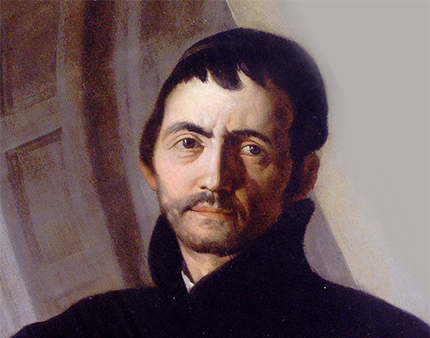Domenico Zipoli, an Italian Baroque composer and Jesuit missionary, may not be as widely known as some of his contemporaries, but his work holds a special place in the hearts of classical music lovers. His compositions, both sacred and secular, are admired for their lyrical beauty, harmonic richness, and expressive depth. Zipoli’s music effortlessly bridges European Baroque styles with the rich cultural influences of the New World, making him a fascinating figure in music history. Below are five of his most celebrated pieces, showcasing his brilliance and versatility as a composer.
1. “San Ignacio de Loyola” (Opera)
One of Zipoli’s most significant works, the opera San Ignacio de Loyola, was composed during his time in the Jesuit missions of South America. Written as part of a larger spiritual theater production, this piece was meant to evangelize and inspire local indigenous communities. The opera blends European Baroque forms with native rhythms and melodies, creating a unique sound that is both spiritual and celebratory. Its choral sections are especially memorable, revealing Zipoli’s talent for creating deep emotional resonance through sacred music.
Why it’s one of his best:
San Ignacio de Loyola stands out as one of the earliest operatic works composed in the New World, and its integration of indigenous musical elements makes it historically and musically significant.
2. “Pastorale” from Sonate d’Intavolatura per Organo e Cimbalo
Zipoli’s Pastorale is perhaps one of his most beloved pieces for keyboard. It’s a light and flowing composition, evoking pastoral scenes of the countryside. The piece moves with an easy grace, featuring a melodic line that is at once simple and captivating. The Pastorale is particularly popular among organists and harpsichordists and is often performed during the Christmas season for its serene and reflective character.
Why it’s one of his best:
The Pastorale is a quintessential example of Zipoli’s ability to craft beautiful, emotive music within a minimal framework. Its simplicity belies the depth of feeling it evokes, making it a timeless favorite.
3. “Canzona in G Minor”
This instrumental piece, part of Zipoli’s Sonate d’Intavolatura per Organo e Cimbalo, is a fine representation of his mastery over counterpoint and Baroque structure. The Canzona in G Minor is deeply expressive, with intertwining melodies that convey a sense of longing and introspection. The piece demonstrates Zipoli’s skill at developing rich harmonic textures while maintaining a clear and balanced form.
Why it’s one of his best:
Its beautiful, melancholic melody and masterful use of counterpoint showcase Zipoli’s command of the Baroque idiom, making this canzona one of his standout works for the keyboard.
4. “Beatus Vir” (Motet)
As a composer deeply involved in religious music, Zipoli wrote numerous sacred pieces, but the motet Beatus Vir stands out as one of his finest. Based on Psalm 112, this choral work is rich with harmonic complexity and uplifting in spirit. The motet is known for its soaring vocal lines and jubilant character, making it a popular choice in liturgical settings even today.
Why it’s one of his best:
Beatus Vir combines Zipoli’s gift for melodic beauty with his deep spiritual conviction, resulting in a work that is as joyful as it is reverent.
5. “Elevation” from Sonate d’Intavolatura per Organo e Cimbalo
The Elevation is a short but profound piece meant to be played during the liturgical elevation of the Host during Mass. It is meditative and solemn, embodying the reverence of the moment it accompanies. The piece is minimal in its structure, yet its simplicity adds to its contemplative beauty. The slow, deliberate pacing allows listeners to reflect, making it a powerful example of Zipoli’s liturgical compositions.
Why it’s one of his best:
The Elevation is a perfect example of how Zipoli could convey deep emotion and spiritual contemplation through minimal means, enhancing the religious experience for listeners during Mass.
Conclusion
Domenico Zipoli’s contributions to Baroque music, particularly in the realm of sacred music, remain influential today. His ability to seamlessly blend European musical traditions with the cultural flavors of his missionary life in South America makes him a unique figure in the history of classical music. The pieces highlighted above represent the best of Zipoli’s catalog, offering listeners a glimpse into the heart and soul of this often overlooked Baroque composer. Whether you’re exploring his music for the first time or revisiting it, these five works are essential listening for anyone who appreciates the beauty of Baroque composition.


Comments are closed